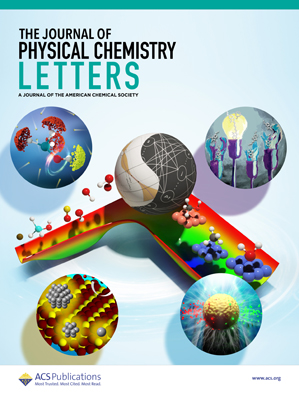EOSnet: Embedded Overlap Structures for Graph Neural Networks in Predicting Material Properties
IF 4.6
2区 化学
Q2 CHEMISTRY, PHYSICAL
引用次数: 0
Abstract
Graph Neural Networks (GNNs) have emerged as powerful tools for predicting material properties, yet they often struggle to capture many-body interactions and require extensive manual feature engineering. Here, we present EOSnet (Embedded Overlap Structures for Graph Neural Networks), a novel approach that addresses these limitations by incorporating Gaussian Overlap Matrix (GOM) fingerprints as node features within the GNN architecture. Unlike models that rely on explicit angular terms or human-engineered features, EOSnet efficiently encodes many-body interactions through orbital overlap matrices, providing a rotationally invariant and transferable representation of atomic environments. The model demonstrates superior performance across various prediction tasks of materials’ properties, achieving particularly notable results in properties sensitive to many-body interactions. For band gap prediction, EOSnet achieves a mean absolute error of 0.163 eV, surpassing previous state-of-the-art models. The model also excels in predicting mechanical properties and classifying materials, with 97.7% accuracy in metal/nonmetal classification. These results demonstrate that embedding GOM fingerprints into node features enhances the ability of GNNs to capture complex atomic interactions, making EOSnet a powerful tool for materials’ discovery and property prediction.

图神经网络在预测材料性能中的嵌入重叠结构
图神经网络(gnn)已经成为预测材料特性的强大工具,但它们往往难以捕获多体相互作用,并且需要大量的手动特征工程。在这里,我们提出了EOSnet(嵌入式重叠结构图神经网络),这是一种通过将高斯重叠矩阵(GOM)指纹作为GNN架构中的节点特征来解决这些限制的新方法。与依赖于明确的角度项或人为工程特征的模型不同,EOSnet通过轨道重叠矩阵有效地编码多体相互作用,提供原子环境的旋转不变和可转移表示。该模型在材料性质的各种预测任务中表现出优异的性能,在对多体相互作用敏感的性质方面取得了特别显著的结果。对于带隙预测,EOSnet实现了0.163 eV的平均绝对误差,超过了以前最先进的模型。该模型在预测力学性能和分类材料方面也表现出色,在金属/非金属分类方面准确率达到97.7%。这些结果表明,将GOM指纹嵌入到节点特征中可以增强gnn捕获复杂原子相互作用的能力,使EOSnet成为材料发现和性能预测的有力工具。
本文章由计算机程序翻译,如有差异,请以英文原文为准。
求助全文
约1分钟内获得全文
求助全文
来源期刊

The Journal of Physical Chemistry Letters
CHEMISTRY, PHYSICAL-NANOSCIENCE & NANOTECHNOLOGY
CiteScore
9.60
自引率
7.00%
发文量
1519
审稿时长
1.6 months
期刊介绍:
The Journal of Physical Chemistry (JPC) Letters is devoted to reporting new and original experimental and theoretical basic research of interest to physical chemists, biophysical chemists, chemical physicists, physicists, material scientists, and engineers. An important criterion for acceptance is that the paper reports a significant scientific advance and/or physical insight such that rapid publication is essential. Two issues of JPC Letters are published each month.
 求助内容:
求助内容: 应助结果提醒方式:
应助结果提醒方式:


